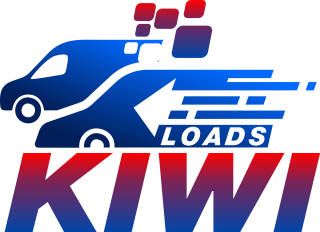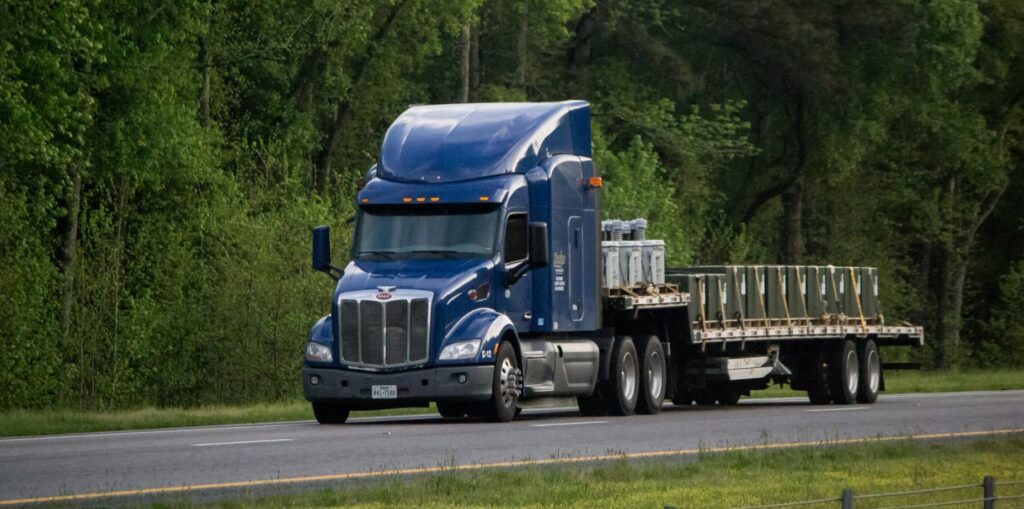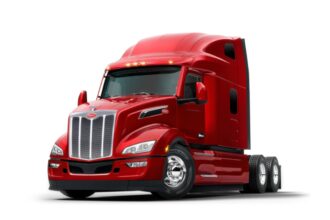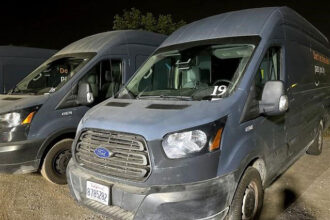Table of Contents
Troubled about how to create a semi-trailer business plan? Read this article and get everything you need to achieve this!
A semi-trailer business, also known as a semi-truck trailer business or trailer dealership, is a type of business that primarily deals with the buying, selling, renting, leasing, or servicing of semi-trailers. Semi-trailers are large, unpowered vehicles commonly used in the transportation and logistics industry for hauling goods over long distances. These trailers have attached semi-trucks or tractor-trailers, which provide the necessary power to move the load.
Starting and running a semi-trailer business requires careful planning and organization. This guide walks you through the steps to create a comprehensive semi-trailer business plan. For a broader perspective on launching your venture, explore How to Start a Semi-Trailer Business
To Develop a Semi Trailer Business Plan:
- Do Research and Market Analysis
- Define Your Business Concept
- Outline Your Products and Services
- Create Your Sales and Marketing Strategy
- Design Structure for Operations and Management
- Make Financial Projections
- Make Funding Request (If Needed):
- Carry Out Risk Analysis
Ready? Let’s begin
1. Do Research and Market Analysis
To prepare a business plan for a semi-trailer business, conduct research and market analysis.
Effective research and market analysis provide a strong foundation for strategic decision-making and business planning.
Start by researching the industry thoroughly. Understand the demand for different types of trailers in your target market. Then, identify your competitors and analyze their strengths and weaknesses. After this, determine your target audience and their specific needs. Here are key factors to keep in mind:
- Market Size and Growth: Determine the size of your target market and its growth rate. Understand if the market is expanding, contracting, or stable, as this will impact your business’s growth potential.
- Market Segmentation: Identify and segment your target market into distinct groups based on demographics, psychographics, behavior, and other relevant criteria. This helps tailor your marketing and product/service strategies.
- Competitive Landscape: Analyze your competitors, including their market share, strengths, weaknesses, and strategies. Identify gaps in the market that your business can fill or opportunities for differentiation.
- Customer Needs and Preferences: Understand the needs, preferences, and pain points of your target customers. Learn more on how to get a semi trailer business ideas
- Regulatory and Legal Considerations: Research industry-specific regulations, licenses, permits, and compliance requirements. Ensure your business adheres to all relevant laws and standards.
- Market Trends and Dynamics: Stay updated on current and emerging trends in the industry. Consider factors like technological advancements, consumer behavior shifts, and economic trends that may impact your business.
- Supplier and Distribution Channels: Evaluate potential suppliers for your products or materials and assess distribution channels to reach your customers effectively. Understand the reliability and cost-effectiveness of your supply chain.
- SWOT Analysis: Conduct a SWOT analysis (Strengths, Weaknesses, Opportunities, Threats) to assess your business’s internal strengths and weaknesses and external opportunities and threats.
- Market Entry Barriers: Determine if there are significant barriers to entering the market, such as high capital requirements, strong brand loyalty among competitors, or complex regulations.
- Consumer Feedback and Surveys: Collect feedback from potential customers through surveys, focus groups, or online reviews to have valuable insights into their preferences and expectations.
- Economic Factors: Analyze economic indicators such as GDP growth, inflation rates, and consumer spending patterns, as these can impact consumer behavior and purchasing power.
- Environmental and Sustainability Factors: Consider the growing importance of environmental sustainability in many industries, and how environmental concerns and sustainability practices may affect your business.
- Technological Considerations: Evaluate the impact of technology on your industry, both in terms of opportunities and potential disruptions.
- Cultural and Social Factors: Understand cultural and social trends that may influence consumer behavior and preferences. This includes factors like cultural diversity and changing societal values.
- Global Market Opportunities: Explore international markets if applicable, assessing factors like export potential, international regulations, and cultural differences.
- Seasonal or Cyclical Trends: Recognize any seasonal or cyclical patterns in your industry, as these can affect sales and resource allocation.
- Data Sources: Ensure that your data sources are credible and reliable, using a combination of primary (direct surveys or interviews) and secondary (existing research and reports) sources.
2. Define Your Business Concept
To do a semi-trailer business plan, define your business concept
Clearly describe your semi-trailer business concept. These are the questions to ask, and provide answers to: Are you planning to sell new or used trailers? Will you offer leasing or financing options? For insights into structuring leasing arrangements, consider How to Lease a Semi-Trailer for Business
Next, state your business’s mission and vision. What sets your company apart from competitors? What values will guide your operations?
3. Outline Your Products and Services
To create a semi-trailer business plan, describe your list of products and services.
Detail the types of semi-trailers you intend to offer. Common options include flatbed, refrigerated, dry van, and specialized trailers.
Explain any additional services your business will provide, such as maintenance, repairs, or customization.
If you’re selling used trailers, outline your inspection and refurbishment process to ensure quality.
4. Create Your Sales and Marketing Strategy
To design a semi-trailer business plan, develop your sales and marketing strategy.
To do this:
- Describe how you’ll reach your target market. This may include online marketing, trade shows, partnerships with trucking companies, or local advertising.
- Develop a pricing strategy that considers your costs, market competition, and customer demand.
- Explain how you’ll generate leads, nurture them, and convert them into paying customers. To ensure all vital steps in planning and executing your business, including marketing, are covered, refer to the Semi-Trailer Business Checklist.
5. Design Structure for Operations and Management
To develop a comprehensive business plan for a semi-trailer enterprise
Here is a step-by-step guide to do that:
- Outline the day-to-day operations of your business. This includes sourcing trailers, maintaining inventory, and managing customer inquiries.
- Introduce your management team and their relevant experience. Highlight any industry expertise that sets your team apart.
- Discuss supplier relationships, including agreements with trailer manufacturers or distributors.
6. Make Financial Projections
To create a business plan for semi-trailers, make financial forecasts.
Wonder, what this is? A financial projection is a forward-looking estimate or forecast of a company’s financial performance and position over a specified period, typically for the next one to five years. Financial projections are based on historical financial data, current financial conditions, and assumptions about future economic and business factors. They provide a roadmap for a company’s expected financial growth. It’s very useful to you as a business owner, investor, or stakeholder as it helps you make informed decisions and set goals.
Here’s a quick rundown of how to make financial projections:
- Prepare a detailed financial forecast that includes income statements, balance sheets, and cash flow projections. Be realistic and conservative in your estimates.
- Calculate your startup costs, including expenses for acquiring trailers, setting up facilities, and marketing efforts. Read more on every accessories you need to succeed in semi-trailer business
- Highlight key financial metrics, such as the break-even point and return on investment (ROI).
>>>GET SMARTER: Semi-Trailer Business Accessories You Need to Succeed
7. Make Funding Request (If Needed)
To create a business plan for semi-trailers, request funds if need be.
This is optional. You know! It depends on whether you need funds for the business or whether you can afford to start on your own, without any fund support.
If you require external funding, specify the amount and how you plan to use it. This could include purchasing inventory, expanding operations, or marketing campaigns. Clearly articulate your repayment strategy for investors or lenders.
Additionally, know that transparency and accuracy in creating and presenting financial projections are crucial for building trust with stakeholders and making informed financial decisions—for information on how your business’s legal structure impacts funding and more, delve into Semi-Trailer LLC- Everything You Must Know
8. Carry Out Risk Analysis
To create a business plan for semi-trailers, conduct a risk assessment.
Risk analysis or assessment is the process of evaluating and assessing potential risks, uncertainties, and their potential impacts on a project, business, investment, or decision-making process.
This demands that you:
- Identify potential risks and challenges specific to the semi-trailer industry and your business model.
- Assess the likelihood of each identified risk occurring.
- Evaluate the potential consequences or impact of each risk if it occurs.
- Prioritize risks based on their likelihood and impact.
- Assign numerical values to the probability and impact of risks.
- Develop strategies to mitigate these risks, such as insurance coverage, contingency plans, or regulatory compliance measures.
- Consider various scenarios that may unfold due to different combinations of risks
- Assess how changes in the assumptions or variables affecting the project or decision impact the overall risk.
- Clearly communicate the results of the risk analysis to all relevant stakeholders, including decision-makers, team members, investors, and external parties.
Don’t forget that these steps are fundamental steps in risk management and decision-making.
Recap
Creating a comprehensive semi-trailer business plan involves a step-by-step approach. Start with thorough industry research and defining your business concept. Outline the semi-trailers and additional services you plan to offer, then craft sales and marketing strategies. Detail daily operations, management expertise, and financial projections, including funding needs if applicable. Lastly, perform a risk analysis to identify and mitigate potential challenges. This well-structured plan serves as a roadmap for attracting investors, securing loans, and achieving success in the semi-trailer industry.



















